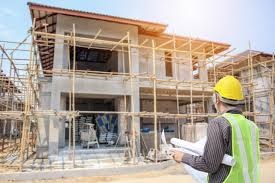Site inspection is a critical component of urban and regional planning that involves the detailed examination of a specific location to gather information essential for informed decision-making. The importance of site inspection cannot be overstated, as it provides planners, architects, engineers, and other stakeholders with the necessary insights to ensure that development projects are feasible, sustainable, and beneficial to the community. This extensive discussion explores the various dimensions of site inspection and its significance in urban and regional planning.

1. Understanding Site Conditions
A. Topography and Landform:
- Elevation and Slope: Site inspection helps in understanding the elevation and slope of the land, which is crucial for determining drainage patterns, construction methods, and potential environmental impacts.
- Natural Features: Identifying natural features such as hills, valleys, rivers, and wetlands helps in preserving the natural landscape and integrating it into the development plan.
B. Soil and Geology:
- Soil Composition: Testing soil composition during site inspection is vital for assessing its suitability for construction, agricultural use, or other intended purposes.
- Geological Stability: Evaluating the geological stability of the site helps in identifying areas prone to erosion, landslides, or seismic activity, thereby mitigating potential hazards.
C. Vegetation and Ecosystems:
- Flora and Fauna: Understanding the existing vegetation and ecosystems helps in planning for green spaces, conserving biodiversity, and ensuring ecological balance.
- Environmental Impact: Assessing the potential environmental impact of development on local flora and fauna ensures sustainable practices are followed.
2. Assessing Infrastructure and Utilities
A. Accessibility and Transportation:
- Road Networks: Inspecting the site for existing road networks, traffic patterns, and accessibility helps in planning for efficient transportation systems.
- Public Transport: Evaluating the availability and proximity of public transport options ensures connectivity and reduces reliance on private vehicles.
B. Water Supply and Drainage:
- Water Resources: Identifying sources of water supply and their capacity is crucial for ensuring adequate water for residential, commercial, and industrial use.
- Drainage Systems: Evaluating existing drainage systems helps in planning for effective stormwater management and preventing flooding.
C. Energy and Communication:
- Power Supply: Assessing the availability and reliability of power supply is essential for planning energy-efficient and sustainable developments.
- Telecommunication Networks: Ensuring access to telecommunication networks supports the integration of smart technologies and enhances connectivity.
3. Evaluating Legal and Regulatory Compliance
A. Zoning and Land Use Regulations:
- Zoning Laws: Site inspection helps in understanding the zoning laws and land use regulations that govern the area, ensuring that the proposed development complies with legal requirements.
- Permits and Approvals: Identifying the necessary permits and approvals required for the project helps in streamlining the planning process and avoiding legal complications.
B. Environmental Regulations:
- Protected Areas: Inspecting the site for proximity to protected areas, such as national parks or conservation zones, ensures that development plans do not violate environmental regulations.
- Pollution Control: Evaluating existing pollution levels and planning for measures to control air, water, and soil pollution ensures compliance with environmental standards.
4. Facilitating Community Engagement and Inclusivity
A. Stakeholder Consultation:
- Community Feedback: Conducting site inspections allows planners to engage with the local community, gather feedback, and address concerns, fostering a sense of ownership and inclusivity.
- Stakeholder Collaboration: Collaborating with stakeholders, including local authorities, businesses, and residents, ensures that the development meets the needs and aspirations of the community.
B. Social Impact Assessment:
- Community Needs: Understanding the social dynamics and needs of the community helps in planning for amenities such as schools, hospitals, parks, and recreational facilities.
- Cultural Preservation: Identifying and preserving cultural and historical sites ensures that development respects and integrates the cultural heritage of the area.
5. Ensuring Feasibility and Sustainability
A. Financial Viability:
- Cost Estimates: Site inspection helps in obtaining accurate cost estimates for land acquisition, construction, and infrastructure development, ensuring financial viability.
- Funding Sources: Evaluating potential funding sources and investment opportunities helps in securing the necessary financial resources for the project.
B. Long-Term Sustainability:
- Environmental Sustainability: Planning for sustainable practices such as renewable energy, water conservation, and green building techniques ensures long-term environmental sustainability.
- Economic Resilience: Ensuring that the development promotes economic resilience by creating job opportunities, supporting local businesses, and fostering economic growth.
6. Mitigating Risks and Hazards
A. Natural Hazards:
- Flood Risks: Inspecting the site for flood-prone areas and planning for flood mitigation measures helps in reducing the risk of water damage and ensuring safety.
- Seismic Activity: Assessing the potential for seismic activity and incorporating earthquake-resistant design features ensures structural stability and safety.
B. Human-Made Hazards:
- Industrial Pollution: Identifying sources of industrial pollution and planning for mitigation measures ensures a healthy living environment.
- Infrastructure Risks: Evaluating the condition of existing infrastructure and planning for upgrades or replacements reduces the risk of failures and accidents.
7. Enhancing Aesthetic and Functional Design
A. Architectural Harmony:
- Contextual Design: Understanding the site context helps in designing buildings and infrastructure that harmonize with the surrounding environment and enhance the visual appeal.
- Landscape Integration: Planning for landscape features such as gardens, parks, and water bodies enhances the aesthetic and functional value of the development.
B. Functional Efficiency:
- Space Utilization: Conducting site inspections helps in optimizing space utilization and ensuring that the layout is functional and efficient.
- User Experience: Planning for user-friendly features such as pedestrian pathways, accessibility ramps, and public amenities enhances the overall user experience.
Conclusion
Site inspection is an indispensable part of urban and regional planning that provides critical insights into the physical, environmental, social, and legal aspects of a development site. By conducting thorough site inspections, planners can make informed decisions that ensure the feasibility, sustainability, and success of development projects. Through understanding site conditions, assessing infrastructure and utilities, evaluating legal compliance, engaging with the community, ensuring feasibility, mitigating risks, and enhancing design, site inspections play a vital role in shaping vibrant, resilient, and inclusive urban and regional landscapes.



